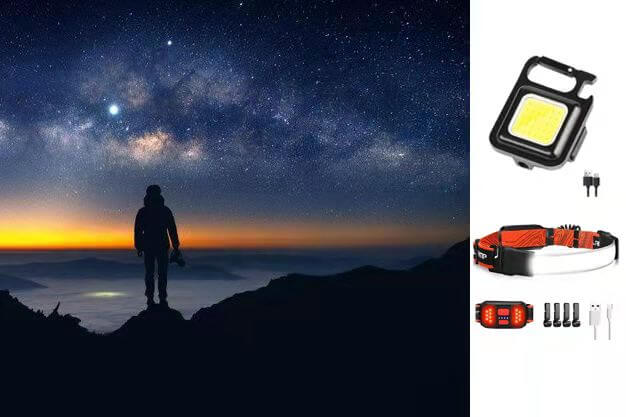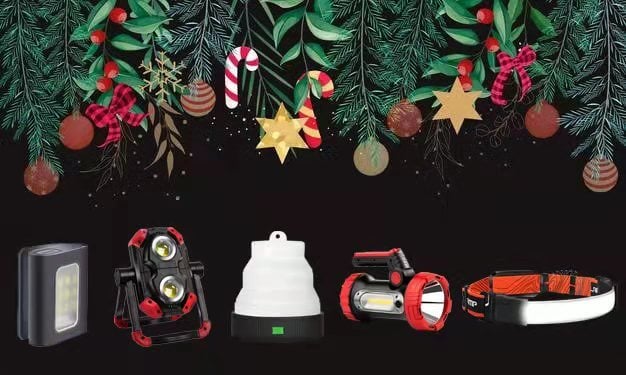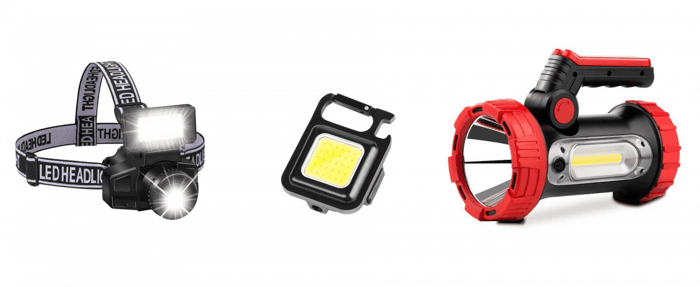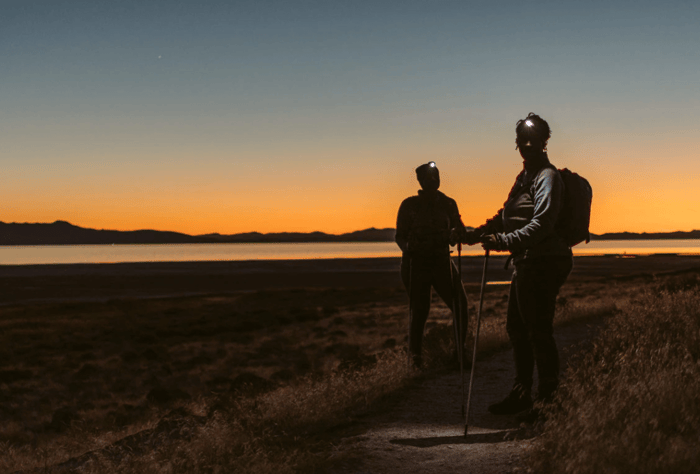Your Cart is Empty

Night Hiking Basics Guide
Listen to article
Audio generated by DropInBlog's Blog Voice AI™ may have slight pronunciation nuances. Learn more
Many people participate in various activities when they are outdoors. Camping, backpacking and night hiking are the four major outdoor activities that are very popular and suitable for people who like to go out and play. Night hiking has become popular in recent years. It is more challenging and is often used by individuals to test their physical and mental toughness. Here are some basics and information to help you start your adventure after dark. Let's see night hiking basics guide together.

What is Night Hiking?
Night trekking is a night trek, no matter how wet you see it, it depends on whether you go after sunset, midnight or before sunrise.
Why hike at night?
Let us first look at the reasons for night hiking. Many people may not understand, why choose to go hiking at night? I think there are three reasons:
Different perspectives of the landscape:If you are used to life in the city, you must be eager to gaze at the Milky Way, watch the meteors across the sky, or find your way in the moonlight. It's better in the middle of winter, because frost turns the bushes into a winter wonderland.
Relieve heat:If you live in a hot place, the hot summer temperatures can be uncomfortable (or even unbearable) during the day, and hiking at night can bring relief.
Connect with the environment:When hiking at night, you will encounter different wild animals. In the dark, the ability to navigate with vision is reduced, while other sensory abilities, such as hearing, are enhanced.
Is it safe to hike at night?
When night hikers travel for the first time, one of their main worries is "night bumps." The noise seems to be amplified at night, and your imagination often becomes crazy. For example, in Australia, there are many nocturnal animals, such as possums and wombats, which make very loud noises. For the first night hiker, this should be frightening.
The lack of light at night is also worrying. Please choose a good weather, there will be moonlight to guide you when the moon is high. In addition, preparing a fully charged flashlight in good working condition will also help you solve the problem of insufficient light. If you are just starting to hike at night, please go with a group of friends.
What do you need for night hiking?
Hiking at night can be more daunting and challenging than during the day. If you are not familiar with night hiking, here are some tips to help you have a more comfortable and fun experience:
Don't go alone: hiking at night can be daunting, and unexpected things can happen when you go out alone. If you are just starting to be a night hiker, hiking with groups is a good idea to improve night safety.
Appropriate hiking route:Choose a trail that you are familiar with during daytime hiking to help you stay safe and understand what will happen. Remember not to try a new road, and do not choose a dangerous and steep path.
Organize your gear: Bring enough snacks and water during the hike, just in case. At the same time, bring the necessary warm jacket and prepare sufficient power supply. Depending on the topography of the trail, consider using trekking poles to help you hike.
Choose good weather: Due to reduced eyesight, hiking at night in bad weather is more risky.
Tell others where you are going: Whether during the day or at night, you should let others know where you are going for a hike, in case you don't come back as expected.
Bring plenty of lights:prepare suitable headlights or flashlights for walking at night, preferably with a red light option to protect your night vision. (See lighting below)
What should I preparelightsfor the night hiking?
If you have never hiked at night before, you may have a misunderstanding that brighter light is better for exploring the dark. In fact, bright headlights and flashlights are more suitable for lighting activities that require maximum lighting range, such as trail running. But walking at night does not need such dazzling white light, which will affect your night vision ability. Learn how to make your eyes adapt to the dark and magnify your night vision ability, which will maximize the view of the scenery, wild animals and starry sky.
But you sometimes need to use flashlights and headlights, such as when walking trails, looking at maps, and picking up equipment. Here are some tips for buying headlights and flashlights:
With multiple lighting modes:when you are looking for things and walking, you need different lighting modes. With multi-level adjustment function, the power will not be consumed so quickly. Hokolite’s 800-lumen rechargeable COB mini keychain flashlight is not only small and portable, it can be hung on a backpack, but also has 3 lighting modes to switch at will. The mini keychain flashlight can meet your different lighting needs.
Comfortable to wear:Find a headlight that can be worn comfortably on your head without shaking. Hokolite's 1000 lumens COB 230° wide beam rechargeable headlamp is not only waterproof and light with a tail lamp, but also comes with 4 helmet hooks, which is very comfortable to wear. The 230° wide beam rechargeable headlight can meet your needs to the utmost extent.
Turn off the lights: If you are using a headlight or flashlight and you hear another group of hikers approaching, please be polite and turn off the lights to avoid affecting their night vision.
Final words
Next time when you start an evening hike, please keep this guide in mind. Come to hokolite to buy suitable lighting tools and start your night hiking!






